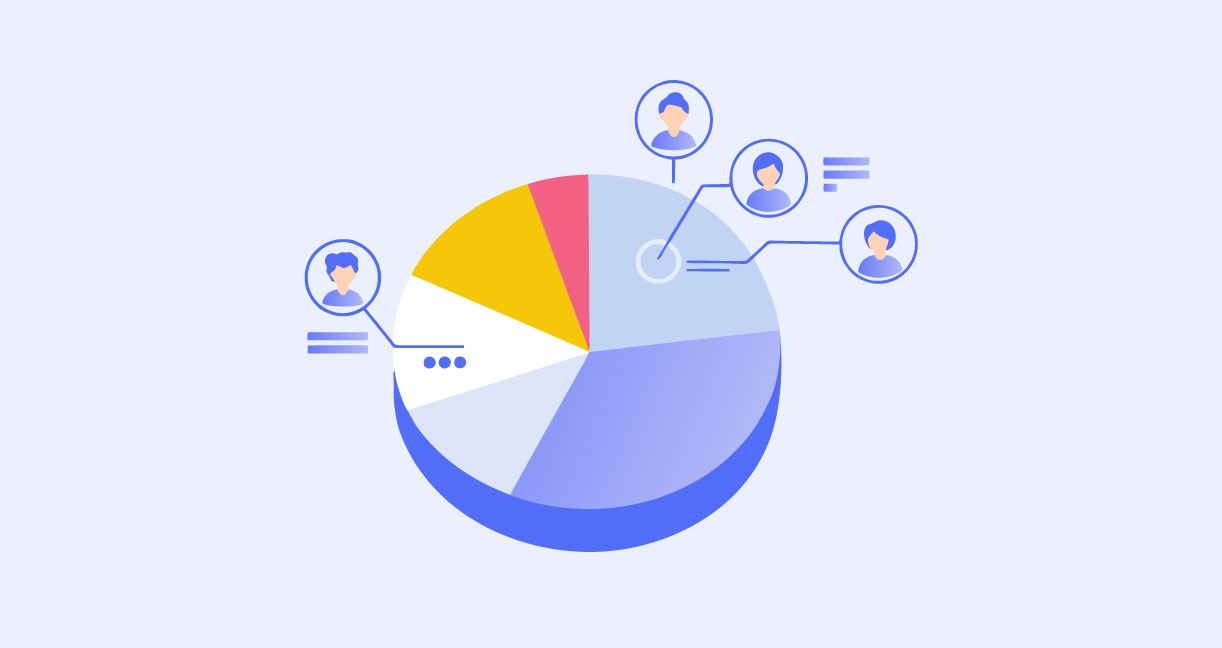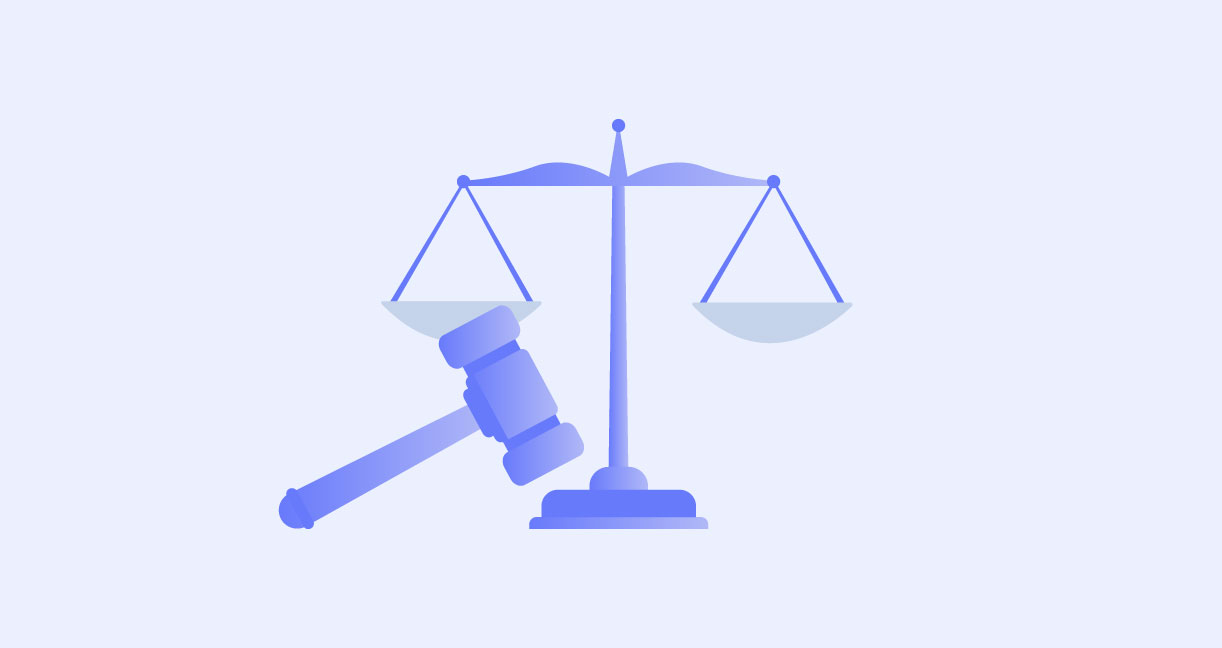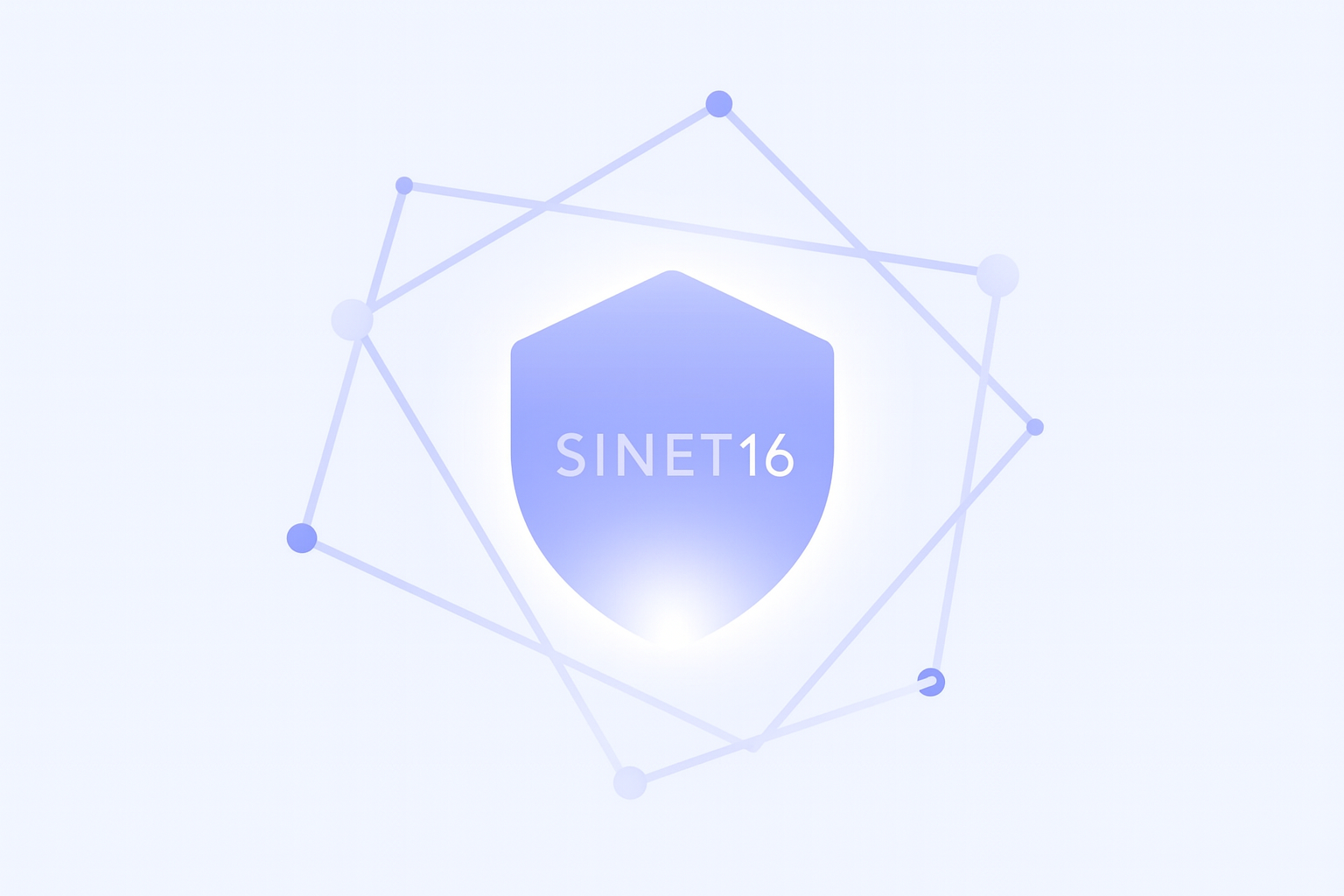Fast Facts on AI Governance Roles and Stakeholders
-
Stakeholder map: AI governance involves internal stakeholders who manage AI and external stakeholders who regulate or are affected by it
-
Role clarity: Main roles include the board, CDAO, CISO, DPO, legal, audit, and engineering, each with specific duties across policy, risk, and operations
-
Regulatory clock: Governance programs must align with timelines from the EU AI Act and standards like NIST and OECD to avoid non-compliance
-
Decision rights: RACI models clarify decision rights for approvals, access, and incident response, ensuring auditability and accountability
-
Operationalization: Tools like Knostic help enforce runtime controls, track KPIs, and unify governance evidence across stakeholders
Difference Between Internal and External Stakeholders in AI Governance?
Internal AI stakeholders run, fund, and operate AI inside the enterprise. They include the board, executives, the chief data and analytics officer (CDAO), chief information security officer (CISO), data protection officer (DPO), as well as legal, risk, audit, and delivery teams in product, platform, security operations (SecOps), identity and access management (IAM), and data governance. On the other hand, external stakeholders set rules, verify compliance, or are impacted by outcomes. They include EU and national regulators, standards bodies, auditors, researchers, and the public.
The EU AI Act operationalizes this distinction by assigning obligations to providers, deployers, and other operators, and by setting dates when governance duties take effect. It entered into force on 1 August 2024, with prohibitions and AI literacy obligations taking effect from 2 February 2025, governance rules and GPAI obligations from 2 August 2025, and additional high-risk timelines following that. These dates shape your AI RACI and program plan.
Standards and guidance also define who is responsible for what, when, and why. The U.S. National Institute of Standards and Technology (NIST) Generative AI Profile maps lifecycle roles and tasks that span policy, engineering, and assurance, enabling internal teams to align with external expectations. Finally, the global Organisation for Economic Co-operation and Development OECD AI Principles, updated in 2024, describe responsibilities for trustworthy AI and encourage coordination between public and private actors, which guides how you engage with external stakeholders, such as regulators and civil society.
Core AI Governance Roles and Responsibilities
An effective program assigns ownership for policies, risks, and results, and connects AI decision rights to artifacts that can be audited. It sets measurable KPIs such as average time to approve a new use case, number of incidents per quarter, and percentage of models passing quality checks, then reports them to the board.
Additionally, it aligns lifecycle checks with platform gates, ensuring models cannot be shipped without the required reviews. It closes the loop with red teaming and regression, and triggers retraining or rollback when thresholds are missed. It also distinguishes between design-time controls, such as (Data Protection Impact assessments (DPIAs) and model cards, and answer-time controls, including Persona-Based Access Control (PBAC) enforcement and output redaction. Finally, it maps internal roles to external duties under regulation, allowing the organization to demonstrate conformity on the dates set by regulators. For the EU, you need to confirm obligations and dates in the official journal text of the AI Act.
To make these responsibilities more understandable, use the quick-reference matrix. A simple table mapping accountability, artifacts, and KPIs for each role helps teams see ownership at a glance.
Quick reference Matrix for Core AI Governance Roles
|
Role |
Accountability |
Artifacts |
Example KPIs |
|
Board and executives |
Risk appetite, funding, oversight |
Charter, risk statements, KPI pack |
Incident trend, time to approval, ROI at scale |
|
CDAO |
Strategy, policy stack, use-case register |
Policies, standards, model cards |
% models under governance, time to ATO |
|
CISO |
Controls, threat model, and incident response |
Security standards, runbooks |
Leakage rate, MTTD, MTTR |
|
DPO and privacy |
Lawful processing, DPIA reviews |
DPIAs, ROPAs, notices |
DPIAs on time, privacy findings closed |
|
Legal and compliance |
Regulatory mapping, contracts |
SLAs, DPAs, policy exceptions |
Exceptions closed, audit readiness |
|
Risk and Internal Audit |
Independent assurance |
Audit plans, reports |
% issues closed on time |
|
Data governance |
Classification, lineage, stewardship |
Catalog, lineage maps |
Label coverage, stale data reduced |
|
IAM (RBAC + PBAC) |
Access policy and reviews |
Access matrices, review logs |
Stale access rate, review completion |
|
Security operations |
Monitoring, response |
Alerts, cases, postmortems |
Detection and response SLAs |
|
Platform Eng. and MLOps |
Environments, model registry, CI/CD |
SBOMs, datasets, version history |
Change failure rate, deployment lead time |
|
Product and LOB owners |
Outcomes, budget, user rollout |
Business case, success metrics |
Adoption, cycle time, CSAT |
|
Model owners and stewards |
Model performance and risk |
Model cards, eval results |
Groundedness, regression pass rate |
|
Red team and evaluation |
Security and reliability testing |
Findings, regression sets |
Vulnerabilities closed, time to fix |
|
Procurement and vendor mgmt. |
Third-party diligence and SLAs |
Diligence reports, contracts |
Vendor issues, SLA breaches |
|
HR and Training |
Skills, acceptable-use training |
Training records |
Completion rate, policy violations |
|
AI ethics committee |
Sensitive cases and harms review |
Ethics assessments |
Escalations resolved |
Now, we are going to briefly elaborate on the roles introduced in the table.
Board and Executives
Boards set risk appetite and require proof that governance cuts losses without stifling value. Executives fund policy, gating, and training; approve or halt high-impact use cases by materiality, safety, and legal exposure. They also demand KPIs at scale across business lines, aligned to external timelines.
Chief Data and AI Officer (CDAO)
The CDAO sets AI strategy and policy, and owns the use-case register. He or she defines risk tiers and lifecycle gates; higher-risk models undergo stricter testing and receive additional sign-offs. They also publish standards for data quality, evaluation, documentation, and monitoring; enforce complete model cards and change logs pre-deploy. Other functions include tracking percentage of models under governance and tiered ATO time, embedding evaluation and registry by default with the platform, and aligning approvals with Legal/DPO timelines and data limits to ensure a predictable, auditable flow.
CISO
The CISO owns the AI control baseline, threat model, and incident response. Sets guardrails for prompts, tools, data egress, and SIEM logging scope; turns threat models into enforceable guardrails and runbooks. Publishes binding security standards; tracks leakage rate, mean time to detect (MTTD), and mean time to recover (MTTR) versus non-AI baselines. Works with red teams on prompt injection, model abuse, and exfil tests; enforces answer-time blocking/redaction to preserve need-to-know.
DPO and Privacy
The DPO ensures lawful processing and leads AI DPIAs. Sets consent, retention, and cross-border rules; documents legal bases for training and inference. Maintains records of processing activities (RoPAs) and AI-specific notices; tracks the timeliness of DPIA and closure of audit findings. Coordinates with engineering on minimization, explainability, and user rights; applies new EU data processing agreement (DPA) interpretations across the model lifecycle. European Data Protection Board (EDPB) Opinion 28/2024 must inform reviews.
A common pitfall is box-ticking DPIAs that miss early risks, causing late-stage delays.
Legal and Compliance
Legal defines regulatory scope and acceptable use; embeds AI clauses in DPAs, SLAs and drafts contracts. Tracks exceptions with time-bound mitigations/approvals; keeps policies, training records, and decisions audit-ready. Coordinates with procurement to enforce vendor data/security/model obligations; converts new guidance into policy and training updates.
Risk and Internal Audit
Risk challenges the framework; Internal Audit assures it. They test design and operating effectiveness, validate remediation, publish plans, report to the audit committee, and track on-time closure and repeat findings. They review model-risk controls (documentation, testing, monitoring) beyond IT controls and reconcile board metrics with system evidence to preserve credibility.
Data Governance
Data Governance defines classification, lineage, stewardship, sets label schemas, and retention tiers used by PBAC, as well as runtime masking. Maintains catalog/lineage so model cards reference authoritative datasets. Tracks label coverage and reduces stale/orphaned items; aligns with DPO/CISO on privacy and security. Ensures training/evaluation datasets are traceable and compliant, reducing audit risk and speeding approvals.
IAM (RBAC + PBAC)
IAM owns access policy and periodic reviews for users, services, and agents. It defines personas, attributes, and step-up rules for answer-time PBAC. Maintains matrices/logs to prove stale access declines and feeds identity context into prompts, tools, and sources. Aligns labels/roles with CISO and Data Governance for runtime enforcement; supports break-glass and exceptional approvals with full audit trails.
Security Operations
SecOps monitors AI and responds. Sets thresholds and SOAR actions for anomalous prompts/outputs/data flows; triages, runs playbooks, and records postmortems with fixes. Meets and reports detection and response SLAs to CISO/board; partners with red teams to convert findings into detections. Ingests external intel to update watchlists/rules; aligns with ENISA’s AI threat landscape as attack paths and actors shift.
Platform Engineering and MLOps
Platform Engineering delivers environments, registries, and CI/CD for models/agents. Sets gates, rollback, and versioning; centralizes SBOMs, dataset versions, and eval records. Tracks change-failure rate and lead time; embeds policy checks in pipelines so approvals/evidence travel with artifacts. Publishes accessible metrics to teams and executives.
Product and Line of Business Owners
Product and line of business (LOB) owners are responsible for outcomes, budget, and rollout. They set scope and acceptance criteria; require success metrics to confirm delivery acceptance. Track adoption, cycle time, and CSAT to prove scalability. Align early with CDAO/CISO/DPO for approvals. Integrate change management and training into launches. Monitor post-launch KPIs and escalate on threshold breaches.
Model Owners and Stewards
Model owners assume performance, risk, and retraining responsibilities. They select data/thresholds, maintain eval suites, publish model cards/results, and keep groundedness in bounds. Partner with red teams and SMEs to expand tests, log regressions/pass rates, and schedule retrains. Join incident reviews.
A common pitfall is missed retrain cycles that allow regressions to persist and erode trust.
Red Team and Evaluation
Red teams test AI security and reliability. They build suites for prompt injection, tool abuse, privacy leakage, bias, and safety, with release-blocking thresholds in place. They publish findings, maintain regression sets, and track vulnerabilities closed and time-to-fix. Scope aligns with the threat model and incident history to keep testing relevant and cost-effective.
Procurement and Vendor Management
Procurement/Vendor Management conducts third-party diligence and SLAs, approves purchases, and sets renewal gates based on new risk evidence. Maintains reports and AI-specific clauses (data, security, evaluation). Tracks issues/SLA breaches and escalates risk. Coordinates with Legal, CISO, and Privacy to close contract-reality gaps. Requires advance notice of model/data changes to prevent supply-chain surprises.
HR and Training
HR owns AI skills and acceptable-use training. It sets role/risk-based curricula and attestation cadence; tracks completion/violations and reports up. Aligns performance management to governance behaviors. Partners with Ethics/Legal on fairness and disclosure; measures impact on incidents and time-to-approval to prove value and refine programs.
AI Ethics Committee
The Ethics Committee reviews high-stakes use cases, sets mitigations, and determines whether to proceed (go) or hold with pre-launch conditions. Records assessments, tracks escalations, and reports patterns to leadership. Includes external voices for societal impact. Verifies user communications are truthful and straightforward, legitimizing hard calls.
Decision Rights and Sample RACI
The example below is a visual table or chart that maps Responsible (R), Accountable (A), Consulted (C), and Informed (I) for each decision. Approving a new use case requires a clear owner and sponsor. In this model, “consulted” refers to a role that provides input that shapes the decision, while “informed” denotes a role that is notified after the decision has been taken.
Example RACI Table
|
Decision |
Responsible (R) |
Accountable (A) |
Consulted (C) |
Informed (I) |
|
Approving a new use case |
Product Owner |
CDAO |
CISO, Privacy |
Board |
|
Set access policy PBAC |
IAM |
CISO |
Data Gov, Privacy |
LOB |
|
Prompt guardrails |
Platform |
CISO |
Model Owner, Legal |
Support |
|
Evaluations and red teaming |
Red Team |
CDAO |
CISO, LOB |
Board |
|
Incident response |
SecOps |
CISO |
Privacy, Legal |
Board, LOB |
|
Vendor onboarding |
Vendor Mgmt. |
Procurement |
CISO, Privacy, Legal |
CDAO |
How Knostic Supports Every Stakeholder
Knostic is the inference-aware control layer for LLM assistants. This is how Knostic delivers runtime enforcement and evidence, organized by role:
- [CISO] / [SecOps]: Answer-time redaction and blocking; tamper-evident logs and SIEM events for detection and response.
- [Executives] / [Board]: Interactive, audit-ready reports linking incidents, approvals, and ROI.
- [IAM] / [Data Governance]: Knostic enforces PBAC at runtime across prompts/tools/outputs using your labels and personas.
- [Product] / [Line of Business]: Adoption dashboards combining quality/risk signals with business outcomes.
- [Red Teams & Pen Testers]: Attack-sim and regression evidence; vulnerabilities closed and time-to-fix tracked.
What’s Next
To avoid non-compliance and missed regulatory deadlines, start by defining roles, AI decision rights, and gates that align directly with the EU AI Act timelines. Map your plan to the EU dates so no team misses a legal deadline.
Align with NIST’s lifecycle view to ensure your controls align with real risk and actors. Implement KPIs so progress is visible to the board. Add answer-time PBAC and output controls to stop oversharing where it happens. Then simulate attacks and failures and fix what you find.
For detailed patterns and checklists, see Knostic’s LLM Data Governance White Paper.
FAQ
• What are the top 3 roles crucial for AI governance in enterprises?
The board sets risk appetite and funds the program. The CDAO owns the policy stack and lifecycle gates that turn strategy into practice. The CISO owns the control baseline and incident response that protects the organization in production. Together, they align goals, rules, and runtime safety.
• How do Stakeholders enforce AI governance?
Stakeholders publish policies with decision rights and embed them into pipelines and platforms. They require model registration, evaluation, and PBAC before deployment. They monitor leakage, detection times, and user outcomes. They run DPIAs and privacy reviews on time and log all approvals and exceptions. They also test continuously and retrain or roll back when thresholds are missed.
• What is the difference between internal and external stakeholders?
Internal roles are responsible for making day-to-day decisions, implementing controls, and ensuring delivery. External stakeholders set rules, verify claims, and represent societal interests. Your program should map internal duties to external obligations and dates. It should also keep evidence that shows conformity and improvement over time.
Tags:
AI data governance











